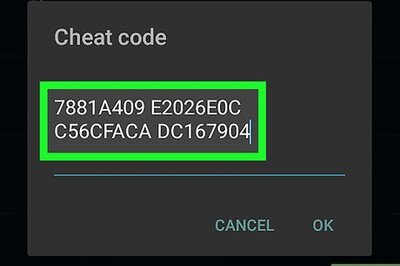
views
Seoul: North Korea said Sunday it had tested a hydrogen bomb which it can mount on a missile, declaring "perfect success" in its biggest-ever nuclear detonation and presenting a potent challenge to President Donald Trump.
Pyongyang has long sought the means to deliver an atomic warhead to the United States, its sworn enemy, and the test will infuriate Washington and regional powers. China, the North’s main ally, issued a swift condemnation.
A jubilant newsreader on state television hailed the "unprecedentedly large" blast,adding the device could be mounted on a missile.
It "marked a very significant occasion in attaining the final goal of completing the state nuclear force", she added.
Hydrogen bombs or H-bombs -- also known as thermonuclear devices -- are far more powerful than the relatively simple atomic weapons the North was believed to have tested so far.
Hours earlier, the North released images of leader Kim Jong-Un at the Nuclear Weapons Institute, inspecting what it said was a miniaturised H-bomb that could be fitted onto an intercontinental ballistic missile (ICBM).
China, Pyongyang's main diplomatic protector, lost no time in issuing "strong condemnation" of the test, which overshadowed the opening of the BRICS summit in Shanghai by leader Xi Jinping.
Japanese Prime Minister Shinzo Abe described the test as "absolutely unacceptable".
In Seoul, President Moon Jae-In called for new United Nations sanctions to "completely isolate North Korea" and said the South would discuss deploying "the strongest strategic assets of the US military".
That could be taken as a reference to tactical nuclear weapons, which were withdrawn by Washington in 1991. Their return would represent a significant escalation by the allies and alarm Pyongyang, which believes itself to be at risk of invasion.
US monitors measured a 6.3-magnitude tremor near the North's main testing site, which South Korean experts said was five to six times stronger than that from the 10-kiloton test carried out a year ago.
The tremor was felt in northeastern China, with people in the border city of Yanji saying they fled their homes in their underwear, and in the Russian Pacific city of Vladivostok.
Whatever the final figure for test's yield turned out to be, said Jeffrey Lewis of the armscontrolwonk website, it was "a staged thermonuclear weapon" which represents a significant advance in its weapons program.
Chinese monitors said they had detected a second tremor shortly afterwards of 4.6 magnitude that could be due to a "collapse (cave in)", suggesting the rock over the underground blast had given way.
'Super explosive power'
Pyongyang triggered a new ramping up of tensions in July, when it carried out two successful tests of an ICBM, the Hwasong-14, which apparently brought much of the US mainland within range.
It has since threatened to send a salvo of rockets towards the US territory of Guam, and last week fired a missile over Japan and into the Pacific, the first time time it has ever acknowledged doing so.
Trump has warned Pyongyang that it faces "fire and fury", and that Washington's weapons are "locked and loaded".
Analysts believe Pyongyang has been developing weapons capability to give it a stronger hand in any negotiations with the US.
"North Korea will continue with their nuclear weapons programme unless the US proposes talks," Koo Kab-Woo of Seoul's University of North Korean Studies told AFP.
He pointed to the fact that Pakistan -- whose nuclear programme is believed to have links with the North's -- conducted six nuclear tests in total, and may not have seen a need for any further blasts.
"If we look at it from Pakistan's example, the North might be in the final stages" of becoming a nuclear state, he said.
Pictures of Kim at the Nuclear Weapons Institute showed the young leader, dressed in a black suit, examining a metal casing with a shape akin to a peanut shell.
The device was a "thermonuclear weapon with super explosive power made by our own efforts and technology", KCNA cited Kim as saying, and "all components of the H-bomb were 100 percent domestically made".
Despite its power there were no readioactive leaks, KCNA said in a later report.
Actually mounting a warhead onto a missile would amount to a significant escalation on the North's part, as it would create a risk that it was preparing an attack.
Failure of sanctions
Pyongyang, which says it needs nuclear weapons to defend itself, carried out its first atomic test in 2006.
Its fifth detonation, in September last year, caused a 5.3 magnitude quake and according to Seoul had a 10-kiloton yield -- still less than the 15-kiloton US device which destroyed Hiroshima in 1945.
The North has been subjected to seven rounds of United Nations Security Council sanctions over its nuclear and ballistic missile programmes, but always insists it will continue to pursue them.
Atomic or "A-bombs" work on the principle of nuclear fission. Hydrogen bombs work on fusion and are far more powerful.
No H-bomb has ever been used in combat but they make up most of the world's nuclear arsenals.




















Comments
0 comment